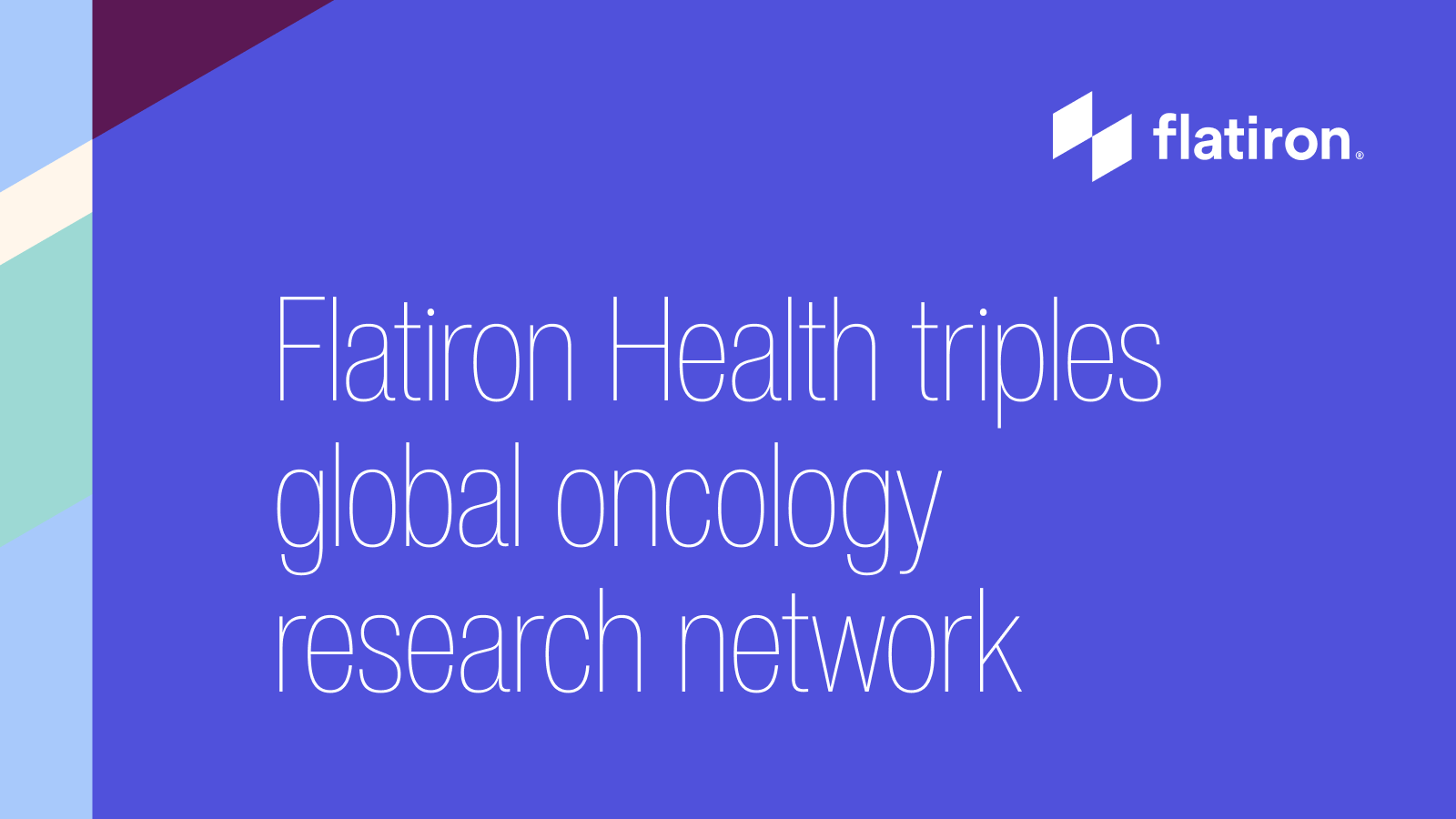We are about a month into the COVID-19 response across the U.S., and living in a reality that many of us never imagined.
This last month has been unpredictable, scary and anxiety-provoking in so many ways, but I've never felt prouder to be a physician and a part of the provider community. I want to thank all of those across the healthcare field for the work they are doing to take care of patients, especially our colleagues on the front lines, and extend my thoughts and support to everyone who has been affected by this — which is, truly, everyone.
At Flatiron, we are tracking the effects of COVID-19 on practices and patients in real time. As the dust begins to settle, the data are revealing some trends and challenges community oncology will face in the coming months.
In examining practices using OncoEMR beginning on March 16th, we're seeing a notable drop in visits when compared to the previous six months, broken down here1 :
-
13% drop in daily visits during which a chemotherapy infusion was administered
-
33% drop in daily non-infusion visits
-
60% increase in appointment cancellations
-
50% decrease in new patient visits
These drops are even steeper if we look at data starting in mid-March, when shelter-in-place orders expanded and more practices were impacted. Given the current decrease in visit volume, practices will likely face financial pressures now and need to prepare to accommodate an influx of appointments in the coming months. There will be both delayed visits and treatments, and new patient volume — including those patients who are not yet diagnosed due to delayed testing. For example, we might see many new colon cancer diagnoses this summer in patients whose colonoscopies were delayed this spring.
COVID-19 moved the idea of ubiquitous telemedicine from improbable to inevitable overnight. Though visits are down, the number of telehealth visits at OncoEMR practices has skyrocketed. Where telehealth was essentially non-existent before the pandemic, OncoEMR practices are now collectively holding thousands of telehealth visits per day. At my practice, Florida Cancer Specialists, we've seen upwards of 3,000 telehealth visits since implementing the service a few weeks ago.
Personally, I have had a positive "Where have you been all my life?" experience with telehealth. Not only do we gain flexibility with telemedicine, but I've been surprised at how seeing a patient in their living environment can reveal insights into their home situation. But telemedicine is not all perfect, of course; many patients actually struggle with or don't have access to the right technology. I do miss the physical connection — putting a hand on a patient's shoulder, holding someone's hand when relaying bad news. And telemedicine requires new clinical and administrative workflows, forcing many of us to go through a learning curve.
Shameless plug: Last week, I had the pleasure of joining Dr. Vineeta Agarwala, physician and general partner at VC-firm a16z, and Dr. Sumit Shah, oncologist and head of digital health at the Stanford Cancer Center, on a16z's podcast to discuss cancer care in a virtual world. Listen here:
The administrative burden of this virus is taking its toll on practices and patients. One acute example is prior authorization, a requirement that the treating physician obtains approval from a payer before prescribing a specific medication or performing a procedure. Even under normal circumstances, prior authorization is a burdensome process that can make or break a practice's ability to collect payment on a service.
The majority of prior authorizations need to be obtained via phone, but phone call hold times with payers have increased from an average of ten minutes to 30-45 minutes. 2 Bottom line: this is not OK! A biller can only manage about one-third of their typical volume. The impact goes well beyond financial; this impedes patient care, since a delay in obtaining a prior authorization often delays treatment.
If you feel like you're working overtime to handle this virus, you're not alone . Initial data from a subset of practices shows a 40% increase in OncoEMR logins over the past weekend, spiking in late-night hours. Both clinicians and administrative staff across our community are working overtime to ensure as little disruption to patient care as possible.
It's both saddening and unifying to know that we are all in this together. I found some great perspective about this in a recent interview with David Kessler, one of the world experts on grief, who frames this discomfort we are all feeling as a form of grief This really is a collective grief, and in a time like this of such uncertainty and fear, numbers and statistics can be a comforting place to come back to.
We will continue to work our hardest for our customers, patients, family and friends, and remain confident that this, too, shall pass.
1. The data are sourced from over 270 community oncology practices that use Flatiron's OncoEMR platform as of April 15, 2020, and may not be fully representative of Flatiron's research-grade datasets. These data should be used for directional purposes only.
2. Sourced from practices using Flatiron's Revenue Cycle Management service as of March 23, 2020. These data should be used for directional purposes only.



